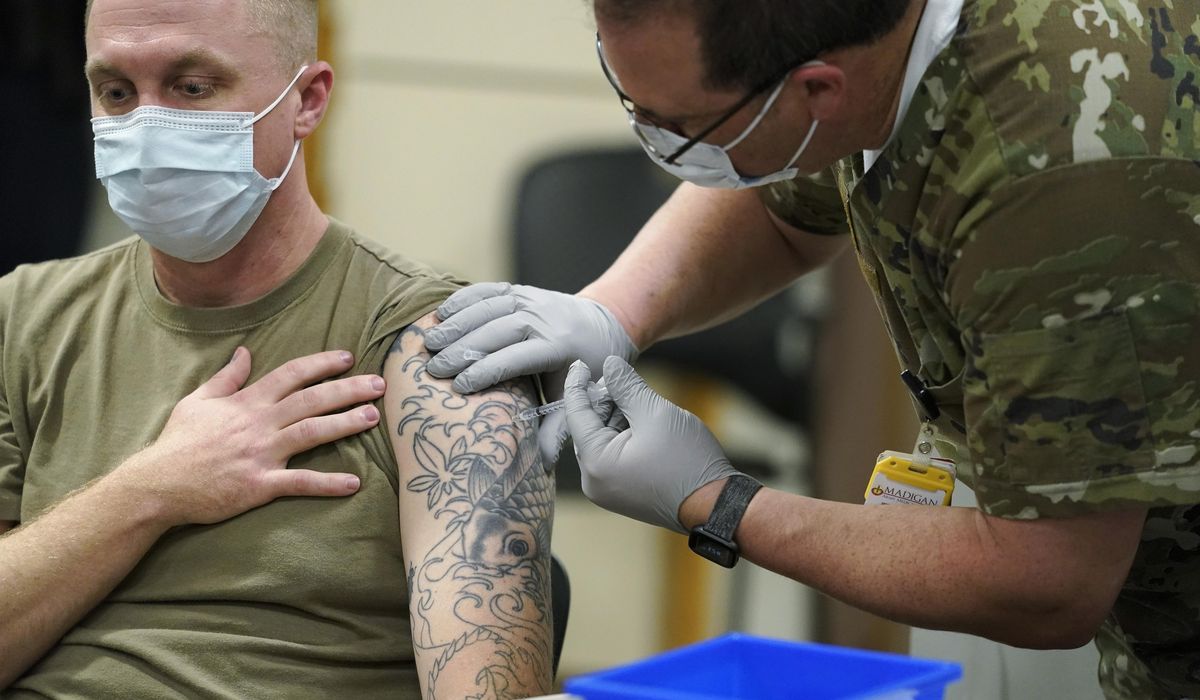Nearly 4,000 U.S. soldiers have refused the COVID-19 vaccine, the Pentagon said Thursday, potentially setting the stage for thousands of Army personnel to be pushed out of the service in the coming weeks.
A day after its Dec. 15 vaccination deadline, the Army said 468,459 active-duty soldiers have received at least one dose of the vaccine, or about 98%. About 96% of soldiers are fully vaccinated.
Thousands of requests for religious or medical waivers are still being processed, but military officials said there are thousands of cases in which soldiers haven’t gotten an exemption but still are refusing the shot.
“Commanders reported that 3,864 active-duty soldiers, less than 1% of the active force, have refused the vaccination order without a pending or approved exemption,” the Army said in a statement Thursday morning.
The Air Force and Navy already have begun to discharge service members who refuse the vaccine. Other services are expected to do the same.
Army leaders publicly warned the unvaccinated of what their future holds.
“To those who continue to refuse the vaccine and are not pending a final decision on a medical or administrative exemption, I strongly encourage you to get the vaccine. If not, we will begin involuntary separation proceedings,” Army Secretary Christine Wormuth said.
Separation proceedings will start in January, officials said. Over the next several weeks, the service will process thousands of waiver requests.
So far, 6,263 active-duty soldiers have gotten temporary medical or administrative exemptions, the Army said. Four permanent medical exemptions have been approved, while 516 requests have been denied. Another 101 are under review.
At least 1,746 soldiers filed religious waiver applications. Eighty-five of those have been denied and 1,661 are under review.
The Army, Navy, Marine Corps and Air Force each received thousands of waiver applications from personnel who said the COVID-19 vaccination violated their religious or deeply held moral beliefs. So far, none have been approved, according to publicly available data.


















